Exploring Joint Cartilage: Structure and Health Impacts
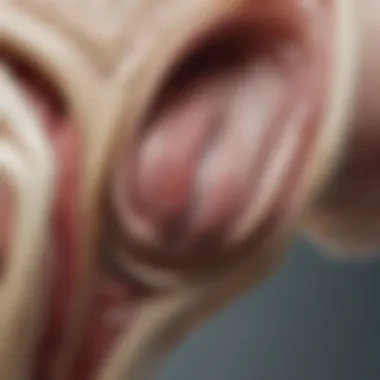
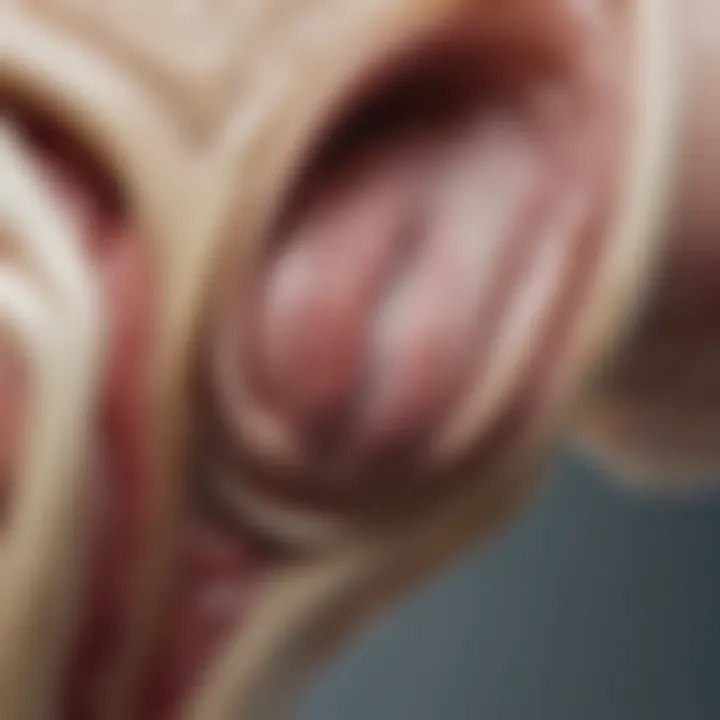
Intro
Joint cartilage is a critically important yet often overlooked component of the musculoskeletal system. Its primary role is to ensure smooth movement between bones at the joints, acting as a buffer that absorbs shock and reduces friction. Without healthy cartilage, everyday activities like walking or even sitting can become painful and limited.
In this article, we will explore the intricate architecture of joint cartilage, diving into how its structure directly influences its function. Additionally, we will shed light on the common ailments that can plague cartilage, such as osteoarthritis and chondromalacia, which can significantly affect an individual's quality of life. By discussing current research on cartilage repair and regeneration, we aim to inform readers about innovative treatment options and preventative measures that can support joint health.
This exploration aims to illuminate not just the anatomy, but the profound implications for health and well-being as we age or engage in various physical activities. Let's dive into the heart of joint cartilage, detailing its components and importance.
Preface to Joint Cartilage
Joint cartilage is often the unsung hero in the conversation about musculoskeletal health. It's easy to overlook until something goes awry, but its role is critical in enabling smooth movement and providing structural integrity to the joints. Understanding what joint cartilage really is, how it functions, and why it is essential can shed light on various health issues that many people face as they age or engage in physical activities.
The significance of joint cartilage cannot be stressed enough. It acts as a cushion between the bones in our joints, preventing bone-on-bone contact that could lead to pain and damage. With conditions like osteoarthritis impacting millions, a deep dive into the properties and functions of cartilage could highlight not just its importance but also the dire consequences of neglecting joint health.
Additionally, this article hopes to explore the greater context of cartilage health through various lenses—biochemistry, mechanical properties, and research into reparative methods. Understanding each aspect, from its structure to its behavior under stress and its biochemical constituency, will allow readers to glean a comprehensive picture of joint cartilage. This sets a foundation for discussing pathologies that arise when things go wrong, leading to discomfort and impaired mobility. Today, illuminating this complex structure serves as a pathway to better joint health strategies and increased well-being as we age.
Definition and Importance
Joint cartilage is defined as a resilient and flexible connective tissue that lines the surfaces of bones at the joints. It significantly reduces friction during movement while also absorbing shocks to protect the underlying bones. But its importance doesn't stop there; cartilage is pivotal in maintaining joint stability and contributes to the overall biomechanical function of the skeletal system.
The crucial characteristics of joint cartilage can be summarized as follows:
- Shock Absorption: It absorbs impact forces exerted on the joints during activities such as walking or running.
- Load Bearing: Carilage helps distribute weight evenly across the joint surfaces, preventing undue stress on any one area.
- Facilitates Movement: Smooth surfaces allow for unimpeded movement of the bones, ensuring fluid and pain-free action.
Given these traits, neglecting joint cartilage can lead to a cascade of problems, such as joint pain, inflammation, and a dramatically reduced quality of life. Knowing its significance accentuates the need for ongoing research and education about maintaining joint health.
Historical Perspectives on Cartilage Research
Historically, cartilage was regarded as a mere filler, getting overshadowed by more glamorous structures like tendons and ligaments. It wasn't until the late 19th and early 20th centuries that scientists began to recognize its physiological complexities. Initial studies focused primarily on cartilage's mechanical properties, examining how it responds under various stresses, but over the decades, the spotlight has shifted to its biochemical makeup.
In the 20th century, advances in microscopy revealed intricate details of cartilage's cellular architecture, particularly the role of chondrocytes—the specialized cells that produce and maintain the cartilaginous matrix. Researchers quickly discovered that cartilage consists mostly of water, which is crucial for its functionality. The relationship between hydration and cartilage health is still a hot topic in contemporary research.
More recent studies are peeling back layers on how aging and lifestyle factors impact cartilage. The spotlight is now on exploring interventions and treatments that could enhance cartilage regeneration. With the advent of stem cell therapy and tissue engineering, the historical journey of cartilage research seems to be on a trajectory towards significant breakthroughs that could reshape treatment options for millions suffering from joint issues.
Anatomy of Joint Cartilage
The anatomy of joint cartilage is essential for understanding its role in maintaining healthy joints and contributing to overall mobility. Joint cartilage is the connective tissue that covers the surfaces of bones in joints, allowing them to move smoothly against each other. The unique structures within cartilage, from its various types to its microscopic components, are crucial in determining its functions and the effectiveness of potential treatments for cartilage-related pathologies.
Types of Cartilage
Hyaline Cartilage
Hyaline cartilage is perhaps the most prevalent type of cartilage found in the human body, especially in joints. Its primary function is to provide a slippery, low-friction surface. The key characteristic of hyaline cartilage is its smooth, glassy appearance which is a result of a dense extracellular matrix that contains type II collagen and a high concentration of proteoglycans. This unique feature allows it to withstand compressive forces and offer support.
In the context of this article, hyaline cartilage is beneficial because it plays a vital role in joint health by preventing bone-on-bone friction. However, it has a disadvantage when it comes to healing; its avascular nature complicates recovery from injuries.
Elastic Cartilage
Elastic cartilage is distinguished by its greater flexibility compared to hyaline cartilage. This type contains a higher proportion of elastin fibers in addition to collagen, which grants it the ability to withstand repeated bending while maintaining shape. The ear and epiglottis are well-known sites for elastic cartilage, highlighting its importance in specific functional roles.
Discussing elastic cartilage in the context of joint health reveals its contributions to stability. While not as broadly significant in joint structures, its unique feature is advantageous in regions requiring both support and flexibility. However, the presence of elastic cartilage in joints is limited compared to hyaline, which makes it somewhat less relevant in the overall analysis of joint cartilage.
Fibrocartilage
Fibrocartilage is characterized by a dense network of collagen fibers, making it the strongest type of cartilage. This type serves as a cushion and shock absorber in areas subjected to significant pressure, such as the intervertebral discs and menisci in the knee. Its key characteristic is its ability to withstand tensile forces, making it an essential component in load-bearing joints.
Fibrocartilage is beneficial in the sense that it provides durability and resilience under stress, adding to the joint's overall functionality. However, a disadvantage of this type is that it can sometimes interfere with the flexibility required in joints that rely more on synergies between different types of cartilage.
Gross Structure
Surface Layer
The surface layer of joint cartilage is the first line of defense facing mechanical stress during movement. Its smoothness minimizes friction and enables the bones to glide over one another. Notably, this layer is composed of collagen fibers arranged in a parallel formation. Such alignment aids in reducing wear and tear, which is vital for long-term joint health.
The surface layer is popular in discussions about cartilage because it directly impacts joint function and longevity. Nevertheless, its exposure to high-stress environments means it’s also the most susceptible to damage.
Middle Zone
The middle zone serves as a bridge between the superficial and deep layers. This region contains more chondrocytes and is crucial for synthesizing and maintaining the extracellular matrix. The key characteristic of this zone is its role in shock absorption, allowing the joint to absorb forces during movements like jumping or running.
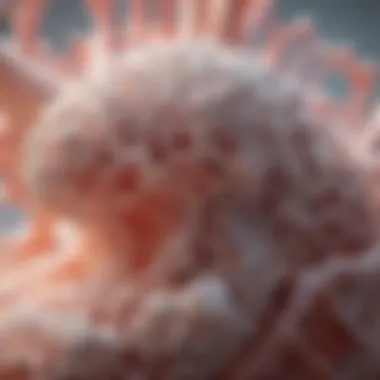
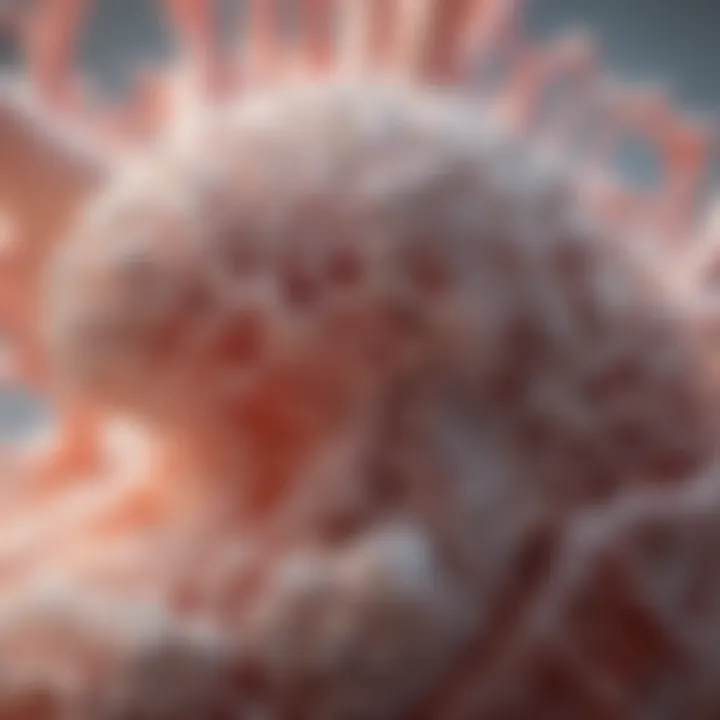
Its importance in the overall structure of cartilage makes the middle zone a key focus when addressing joint pathologies. The downside, however, lies in the potential degeneration of this layer due to age or injury.
Deep Zone
The deep zone is the innermost part of cartilage, containing densely packed collagen fibers perpendicular to the joint surface. This arrangement provides substantial tensile strength and supports the cartilage's functions under load. The deep zone is vital for load-bearing capacities of joints, making it a significant player in overall joint stability.
Its structural uniqueness lends itself to a robust evaluation when discussing joint cartilage. However, it does come with a caveat; if compromised, severe joint issues can arise, impacting mobility and quality of life.
Microscopic Structure
Chondrocytes
Chondrocytes are the sole cell type found in cartilage. They are responsible for producing and maintaining the cartilage matrix, playing an integral role in tissue health. Chondrocytes are found in lacunae within the matrix and are noteworthy for their metabolic activity, which is vital for cartilage maintenance and repair.
These cells are essential in comprehending how cartilage functions and the healing process. However, the limited ability of chondrocytes to proliferate can be seen as a disadvantage when it comes to extensive damage or degeneration.
Extracellular Matrix
The extracellular matrix is the non-cellular component that provides structural and biochemical support to chondrocytes. It consists mainly of type II collagen and proteoglycans, which give cartilage its unique properties. The matrix is critical for the functionality of cartilage, influencing its flexibility and resilience.
Highlighting the extracellular matrix is crucial in addressing both the health and pathology of cartilage. Its disadvantage, however, is that damage to this matrix can drastically compromise cartilage integrity, making understanding its properties and functions essential in this discussion.
Biochemical Composition of Cartilage
The biochemical composition of cartilage is a cornerstone in understanding its structure and function within joints. This unique tissue does not just serve as a cushion; it plays a pivotal role in maintaining joint integrity and overall musculoskeletal health. The specific elements that comprise cartilage provide insight into how it withstands mechanical stress, adapts to various loads, and ultimately contributes to joint mobility. When examining cartilage, key components such as proteins, glycoproteins, proteoglycans, glycosaminoglycans (GAGs), and water content emerge as critical players.
Proteins and Glycoproteins
Cartilage contains a diverse array of proteins and glycoproteins that contribute to its structural framework and functional capabilities. Collagen, specifically Type II collagen, forms the bulk structure of hyaline cartilage, providing tensile strength that resists pulling forces. Apart from collagen, other proteins like elastin are also found, although they are less abundant. This protein imbues cartilage with elasticity, allowing it to return to its original shape after deformation.
Glycoproteins, such as fibronectin and laminin, play crucial roles in cell adhesion. These molecules help anchor chondrocytes (cartilage cells) within the extracellular matrix, ensuring stability and maintenance of tissue structure. The intricate interplay of these proteins and glycoproteins underlines the specialized nature of cartilage as a load-bearing structure.
Proteoglycans and GAGs
Moving deeper into the composition, proteoglycans and GAGs are essential for cartilage's functionality. Proteoglycans consist of a core protein with glycosaminoglycan chains attached. These chains include substances like chondroitin sulfate and keratan sulfate, creating a gel-like environment that helps retain water and provides shock absorption.
Proteoglycans are akin to sponges; they hold onto water, enabling cartilage to act as a cushion during joint movement, which sustains contact between bones without damaging them.
This property is vital, especially as cartilage experiences compression during activities such as walking or jumping. GAGs maintain the versatility of cartilage, allowing it to adjust dynamically to various mchanicak conditions. Through their network, proteoglycans not only provide compressive strength but also facilitate nutrient diffusion, which is pivotal given the avascular nature of cartilage.
Water Content and Its Significance
The water content of cartilage is another significant aspect of its biochemical composition, typically constituting around 70-80% of cartilage. This high water content is essential for maintaining cartilage stiffness, ensuring proper mechanical and physiological function. The presence of water contributes to the viscoelastic properties of cartilage, allowing it to deform under stress and return to its original form when the load is removed.
Moreover, the water acts as a transport medium for nutrients and waste products, enabling the metabolic activity of chondrocytes. This hydration plays a crucial role in the health of cartilage; dehydration can lead to a breakdown of the matrix and contribute to conditions like osteoarthritis.
In summary, understanding the biochemical composition of cartilage—its proteins, glycoproteins, proteoglycans, GAGs, and water—is fundamental for appreciating how this tissue functions in health and disease. By examining these components, researchers can develop targeted therapies to aid in cartilage repair and regeneration, potentially leading to enhanced strategies for managing joint-related disorders.
Mechanical Properties of Joint Cartilage
Understanding the mechanical properties of joint cartilage is crucial for appreciating how our joints function under duress. Cartilage doesn't just sit there; it bears loads, absorbs shocks, and allows for smooth movement. This makes it a key player in maintaining joint health and mobility. We can look deeper into the specific attributes that contribute to these functions, helping us to grasp how cartilage performs under various conditions and what that means for potential health issues.
Tensile Strength and Elasticity
The tensile strength of cartilage is its ability to withstand tension. Think of it like the cables on a suspension bridge that need to support the weight of vehicles while bending under the load. Cartilage is quite good at this, thanks to its unique structure that includes collagen fibers. These fibers can stretch without breaking, giving cartilage the required elasticity. When we move, our joints flex and twist, and this elasticity helps absorb the forces that come into play, thus protecting bones and preventing injuries.
Elastin, another protein found in cartilage, contributes to its elasticity. Combining collagen with elastin aids in allowing deformation and returning to the original shape. It's a finely tuned balance, and any disruption, such as degradation from wear and tear, can lead to increased susceptibility to injuries, which is especially pertinent in athletic settings.
Viscoelastic Behavior
Cartilage exhibits viscoelastic behavior, meaning its response to stress is time-dependent. If you were to push on a sponge, you would notice that it compresses quickly but takes time to return to its original shape. Similarly, when pressure is applied to cartilage, it behaves more like a fluid in the short term but returns to its elastic state over longer periods.
This property is what allows cartilage to absorb shocks efficiently. For instance, during high-impact activities like running or jumping, cartilage can compress under load but manage to protect the underlying bone from harsh impacts. The synovial fluid, present in the joints, also plays a part in this, acting almost like a lubricant, keeping the cartilage hydrated and functioning optimally.
Load Distribution Mechanism
One remarkable feature of joint cartilage is its ability to distribute loads evenly across the joint surface. When weight is applied to a joint, cartilage acts uniformly to disperse that pressure across a wider area, significantly reducing the stress on any single point. Imagine a gentle snowfall covering a thin layer of grass; if the snow falls evenly, the grass is protected. If it piles in one place, that area gets crushed.
The intricate structure of cartilage helps it in this task. In many ways, it resembles a sponge that can withstand compression and then evenly redistribute pressure as it decompresses. It prevents bone-on-bone contact and mitigates the risk of cartilage breakdown or damage over time. A disruption in this load distribution can lead to joint pain and conditions like osteoarthritis, emphasizing the significance of maintaining healthy cartilage.
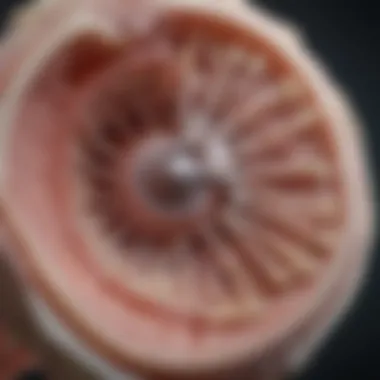

"The health of joint cartilage isn’t just about surviving movements; it’s about thriving through them, enduring weight, and effectively absorbing shocks that threaten its integrity."
In summary, the mechanical properties of joint cartilage—its tensile strength, elasticity, viscoelastic behavior, and load distribution mechanisms—are not only fascinating from a scientific perspective but vital for maintaining mobility and preventing joint disorders. Understanding these properties helps us appreciate the complexity of joint health and paves the way for future research in cartilage repair and regeneration.
Functions of Joint Cartilage
Understanding the functions of joint cartilage is foundational for grasping its significance in musculoskeletal health. Carving out a deeper appreciation of its role helps illuminate how this connective tissue underpins mobility and overall joint integrity. It’s not just filler between bones; it’s an active player in how we move and thrive.
Role in Joint Movement
One of the prime functions of cartillage is to facilitate joint movement. When you consider the biomechanics at play, cartilage acts like a buffer between the articulating surfaces of bones. It allows these surfaces to glide over one another seamlessly. Think of it like oil in a well-functioning machine; without it, you’d hear a nasty grind instead of that smooth performance. In joints such as the knee or shoulder, various types of cartilage, primarily hyaline cartilage, are critical for maintaining proper motion.
Additionally, the arrangement of the cartilage contributes greatly to its function. The smooth, slick surface enables a nearly frictionless motion, which is essential in highly mobile joints. If joint cartilage gets damaged or worn down, joint movement becomes impaired, leading to discomfort and limitations. This interplay between cartilage and bones is crucial, underlining why maintaining cartilage health is paramount for an active lifestyle.
Shock Absorption Mechanism
Joint cartilage also possesses an impressive ability to absorb shock. Just as a sponge expands to absorb water, cartilage is designed to compress and then return to its original shape, dissipating forces during physical activities. This elasticity is particularly important during high-impact movements like running or jumping.
When standing or moving, the forces are transmitted through the cartilage to the underlying bone. Here’s a staggering fact: around 70% of cartilage is made up of water. This high water content aids in cushioning and distributing load across the joint, ensuring that no single area bears the brunt of impact. Each step we take generates a significant amount of force, and cartilage helps absorb that energy effectively. Without this function, daily tasks could become increasingly painful or even injurious.
Facilitation of Joint Lubrication
An often-overlooked function of joint cartilage is its role in the lubrication of joints. Within cartilage, there are specialized molecules known as proteoglycans that help retain water and create a gel-like environment, which is essential for the smooth movement of joints. This gel-like substance not only keeps the surfaces lubricated but also ensures that nutrients reach the cartilage cells, driving their maintenance and health.
Moreover, during joint movement, synovial fluid—a key lubricating substance—is distributed evenly across the joint due to the cartilaginous surface. This dynamic interaction is vital for reducing wear and tear on the joint, effectively prolonging its lifespan. For health practitioners, understanding the nuances of joint lubrication can drive strategies that mitigate risk factors associated with joint degeneration.
"Cartilage doesn’t just endure; it fortifies and protects the very essence of movement itself."
Pathologies Affecting Joint Cartilage
Understanding the health of joint cartilage is crucial, especially when it comes to pathologies that can impede its function and longevity. Joint pathologies, including osteoarthritis and chondromalacia, contribute significantly to pain and dysfunction in movement, affecting the quality of life for many individuals. When joint cartilage deteriorates or suffers injury, it can lead to considerable consequences, not only physiologically but also psychologically for the afflicted.
Osteoarthritis
Etiology
The etiology of osteoarthritis is multi-faceted. It involves a mix of genetic, environmental, and lifestyle factors that lead to cartilage wear and tear over time. One of the distinctive characteristics is the mechanical stress placed upon joints, along with inherent biochemical changes within the cartilage. The aging process, coupled with excessive strain due to obesity or repetitive joint use, proves to be a significant contributor. This article benefits from emphasizing the etiology because it helps to pinpoint preventative measures, shedding light on the importance of maintaining a healthy weight and managing joint impact, which are often overlooked in discussions about joint health.
Symptoms
The symptoms of osteoarthritis typically present as a combination of joint pain, stiffness, and swelling, especially after rest or prolonged activity. A unique feature of these symptoms is the variability; they intensify according to the time of day, level of physical activity, and even weather conditions, which can be confusing for many patients. Addressing these symptoms in detail can guide readers toward recognizing them early, allowing for timely intervention.
Progression
Progression of osteoarthritis is often gradual, but it can vary significantly from person to person. The hallmark of this progression is the slow degradation of protective cartilage, which leads to an increase in pain and reduced joint mobility. By highlighting the stages of progression, this article can assist individuals in understanding how osteoarthritis develops and the importance of early treatment and lifestyle adjustments to slow its course.
Chondromalacia
Causes
Chondromalacia refers specifically to the softening of cartilage, often seen in the knees. Common causes include trauma, overuse, or misalignment of the patella. One key characteristic is its tendency to develop noticeablly in younger, active individuals, making it uniquely relevant. Presenting the causes helps to draw connections between activity levels and potential risk, providing valuable insight for those engaging in high-impact sports or activities.
Diagnosis
Diagnosis typically involves a combination of physical exams and imaging tests, like X-rays or MRI scans. A distinctive aspect of diagnosis is identifying crepitus—those crunchy or grating sounds from the joint—which serves as an auditory cue during examination. This detail not only aids in precise diagnosis but also illustrates the clear relationship between physical examination techniques and patient outcomes in this article.
Treatment
Treatment of chondromalacia often includes rest, physical therapy, and, in severe cases, surgical interventions. The emphasis here is on management through conservative methods before escalating to surgery. This progressive approach underscores the article's goal of educating individuals on the importance of understanding their options fully before making significant healthcare decisions.
Traumatic Injuries to Cartilage
Traumatic injuries to cartilage can stem from acute incidents, such as falls, accidents, or sports injuries. The impact of these injuries can lead to immediate and lasting damage to the cartilage structure. Understanding the specifics of these injuries is essential for rehabilitation and recovery strategies. By detailing the various types of injuries and their associated impacts, the article informs readers about preventative measures and the essence of seeking timely medical advice to mitigate long-term effects.
Current Research in Cartilage Repair
As our understanding of joint cartilage continues to evolve, an increasing spotlight is being cast on innovative repair techniques. This research not only holds potential for addressing joint diseases and injuries but also reshapes our grasp of musculoskeletal health as a whole. The dynamic nature of cartilage repair research is crucial because it seeks to provide patients with improved treatment options and ultimately enhance their quality of life. In this section, we will delve into significant areas of research, such as stem cell therapy, tissue engineering, and the development of biomaterials aimed at cartilage regeneration.
Stem Cell Therapy
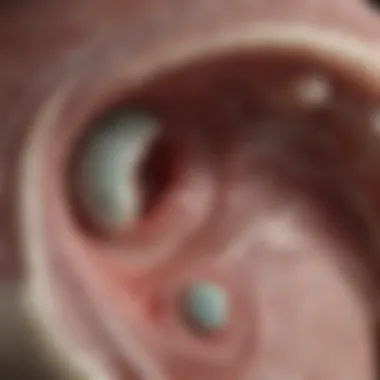
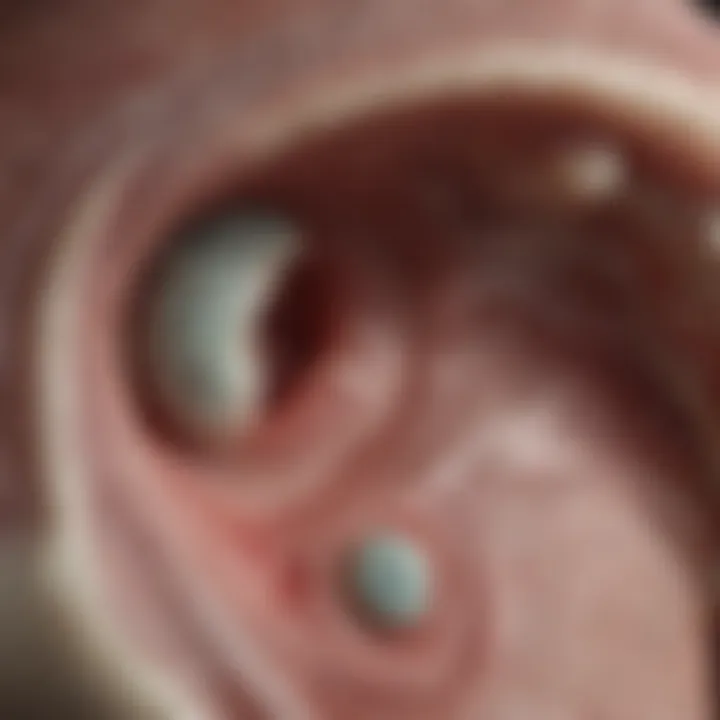
Stem cell therapy represents one of the most promising avenues in cartilage repair. The basic premise is straightforward: stem cells have the inherent ability to differentiate into various cell types, including chondrocytes, the cells responsible for cartilage formation. This capability raises the tantalizing possibility of using stem cells to restore damaged cartilage and even regenerate it to a functional state.
In numerous studies, researchers have explored various sources of stem cells, such as mesenchymal stem cells from bone marrow or adipose tissue. For example, a study indicated that injecting these stem cells directly into arthritic joints resulted in improved function and relief from pain. The treatment harnesses the natural healing capabilities of the body, adding an element of biological repair that traditional methods often lack.
However, practical challenges remain. Ensuring the survival and integration of transplanted cells, as well as balancing their differentiation, are ongoing hurdles that researchers are working to overcome.
Tissue Engineering Approaches
Tissue engineering combines principles of biology and engineering to develop solutions for damaged tissues. In the context of cartilage repair, scientists are focusing on creating scaffolds that mimic the mechanical properties and biological environment of native cartilage. These scaffolds can be seeded with cells—either patient-derived or commercially available—allowing for customized treatment options.
The scaffolds can be constructed from various materials, including natural polymers like collagen or synthetic alternatives that can be tailored to match the desired properties of cartilage. Laboratory studies have showcased these engineered constructs’ potential to restore cartilage functionality and diminish degeneration.
"The future of cartilage restoration may well lie in our ability to engineer tissues that are not only functional but also durable in the long term."
These engineered methods align well with the growing interest in regenerative medicine, promising a shift away from merely managing symptoms toward genuine healing of joint issues.
Biomaterials for Cartilage Regeneration
The exploration of biomaterials is another dimension of cartilage repair research. Biomaterials play a pivotal role by serving as artificial substitutes for damaged cartilage. Their design focuses on biocompatibility, mechanical strength, and the ability to promote cell adhesion and proliferation.
Recently, advanced materials like hydrogels and 3D-printed constructs have taken the forefront of study. Hydrogels, which can hold large amounts of water, closely resemble the natural extracellular matrix of cartilage and provide a supportive environment for chondrocytes.
3D printing technology enables the precise fabrication of cartilage-like structures tailored to individual patients, potentially revolutionizing reconstructive surgeries. Researchers are experimenting with these materials, studying their response within the body over time. Early results are encouraging, showing promise for long-lasting repairs.
As research advances, we are witnessing a shift in perspective from mere treatment to holistic repair strategies, emphasizing the significance of innovative research in improving outcomes for joint health.
Preventive Measures and Lifestyle Considerations
Preventive measures and lifestyle considerations are pivotal in maintaining joint health and ensuring the longevity of joint cartilage. With the increasing prevalence of joint disorders, particularly in aging populations, understanding these measures can empower individuals to take control of their musculoskeletal health. In this section, we will discuss how nutrition, exercise, and weight management play crucial roles in supporting joint function and preventing deterioration over time.
Nutrition and Joint Health
Nourishing the body with the right foods is fundamental when it comes to joint health. A diet rich in vitamins and minerals can keep cartilage resilient and stronger against wear and tear. Nutrients like omega-3 fatty acids, found in fish such as salmon and sardines, can reduce inflammation within the joints.
Consider incorporating the following nutrients into your diet:
- Vitamin C: Essential for collagen production, which is critical for the structure of cartilage. Citrus fruits and kiwis are excellent sources.
- Glucosamine and Chondroitin: These compounds are often utilized in supplements. They may help maintain cartilage integrity. Foods like shellfish and certain vegetables can also provide these naturally.
- Antioxidants: Berries, green tea, and dark leafy vegetables help combat oxidative stress, promoting overall joint health.
With these components in mind, individuals should aim to consume a balanced diet that promotes optimal joint function.
Exercise and Joint Flexibility
Engaging in regular physical activity is another cornerstone of joint cartilage health. Contrary to the misconception that rest is best for joints, moderate exercise can fortify joint structures, enhancing flexibility and strength. Activities such as swimming, cycling, and yoga are particularly joint-friendly.
Here’s how exercise impacts joint health:
- Increased Blood Flow: This promotes nutrient delivery to cartilage, nourishing it effectively.
- Muscle Support: Strengthening muscles around a joint can help bear loads and reduce pressure on cartilage.
- Improved Range of Motion: Enhanced flexibility promotes smoother movements, reducing friction in the joints.
It is vital to differentiate between high-impact and low-impact exercises. While running or intense aerobics can be helpful, they should be balanced with gentler forms of activity to minimize undue stress on cartilage.
Weight Management and Its Impact
Maintaining a healthy weight is of utmost importance for joint health. Excess weight can place additional pressure on weight-bearing joints like the knees and hips, accelerating cartilage degeneration. Each pound of excess weight can generate several pounds of pressure on the joints during activities such as walking or climbing stairs.
Here are some considerations regarding weight management:
- Food Choices: Opt for whole, unprocessed foods that provide nourishment without excessive calories.
- Portion Control: Being mindful of portion sizes can greatly assist in managing caloric intake.
- Regular Monitoring: Keeping track of weight can help individuals stay informed about their health status.
Summary
In summary, adopting preventive measures through nutrition, exercise, and weight management can significantly impact cartilage health. Such lifestyle choices do not just aid in protection against deterioration but also enhance overall well-being, allowing individuals to remain active and engaged in their daily lives.
Epilogue
The role of joint cartilage in musculoskeletal health cannot be overstated. Understanding its structure, function, and the implications for health is crucial not just for medical professionals, but for anyone interested in maintaining a high quality of life as they age or recover from injuries. Joint cartilage acts as a cushion, allowing for smooth movement, and is vital for minimizing wear and tear on bones. Acknowledging its significance helps in grasping the underlying causes of various joint-related pathologies and informs the approaches toward their prevention and treatment.
Summary of Key Points
- Anatomical Structure: Joint cartilage consists primarily of hyaline cartilage, which covers the ends of bones in synovial joints, providing a smooth surface for movement. Understanding the different zones of cartilage helps in realizing how it withstands compressive and tensile forces.
- Biochemical Composition: The specific proteins, glycoproteins, and proteoglycans present in cartilage contribute to its resilience and ability to absorb shock. Water content, a key component, also plays a critical role in maintaining cartilage integrity.
- Mechanical Properties: The viscoelastic behavior of cartilage ensures it can absorb impacts and recover, crucial for protecting joints during physical activity.
- Functions in Joint Health: Cartilage facilitates movement, shock absorption, and lubrication within joints, contributing to overall joint functionality and mobility.
- Pathologies: Common issues such as osteoarthritis and chondromalacia shed light on how cartilage wear can lead to pain and dysfunction, emphasizing the need for early intervention.
- Current Research: Advances in stem cell therapy and tissue engineering show promise in cartilage repair and regeneration, suggesting that the future holds more effective solutions for joint health.
Future Directions in Cartilage Research
Research in cartilage repair is rapidly evolving. Future studies could explore:
- Gene Therapy: Understanding genetic influences on cartilage degradation and regeneration. Manipulating specific pathways may provide a way to enhance cartilage repair processes.
- Biomaterials Development: Investigating new materials that match the mechanical properties of cartilage, allowing for implantation in joint repair that integrates seamlessly with native tissue.
- Comprehensive Joint Health Approaches: Rather than focusing solely on cartilage, research could expand to understand the interplay between cartilage, surrounding tissue, and the entire joint environment.
- Personalized Medicine: Tailoring treatments based on individual biomechanical and genetic factors to yield better results in cartilage repair strategies.
- Long-Term Effectiveness Studies: Monitoring the outcomes of current treatments over extended periods to understand their efficacy and potential side effects better.
In summary, the intricate relationship between joint cartilage and overall health highlights the need for continued research and interest in this field. As we better understand cartilage, we move one step closer to innovative solutions that could enhance mobility and diminish pain for countless individuals.







